There are seven billion people alive today. The bible has been telling us for over a thousand years that every one of them is descended from just two humans, Adam and Eve. It’s interesting how often old stories we used to explain our world before science can strike a grain of truth! DNA that is passed from father to son on the Y chromosome, and mitochondrial DNA that is inherited from one’s mother, can both be traced back to single points of origin. As our understanding of population genetics in the world today grows, we get closer and closer to identifying our last common ancestors.
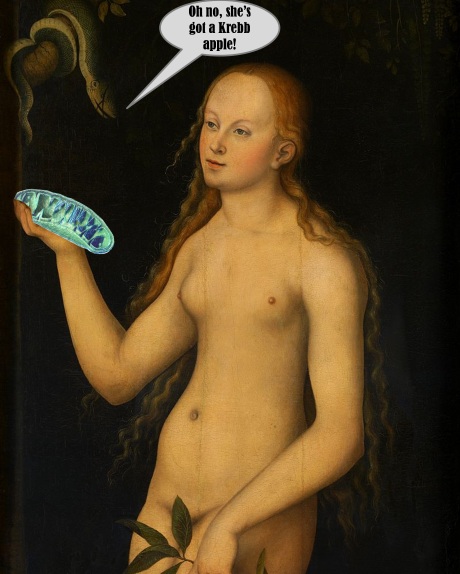
This is the best bio-biblical pun you will see today
Finding our forefathers
Most of our DNA is packed into pairs of matching chromosomes (autosomes) in the nucleui of our cells. It is quite easy for stretches of DNA to be swapped between these pairs of chromosomes, which allows substantial genetic changes to occur between generations. The exceptions to this are the sex chromosome Y, and the DNA inside mitochondria, neither of which have partners to swap with. Only one parent – the father – can give offspring a Y chromosome. Likewise, when a sperm and egg meet the only bit of the sperm that is retained is the nuclear DNA, thus all the mitochondrial DNA the offspring receives comes from its mother. This, it turns out, is hugely valuable to us in tracing human lineages back through time.
Click here if you want an explanatory GIF I can’t embed
Y Chromosomal Adam
The Y chromosome is passed exclusively from father to son. All the other chromosomes which come in pairs (including X in women) only have a 50% chance of being passed to the next generation. Y chromosomal lineage can therefore be traced back through males generation after generation. As random mutations appear on the chromosome over many generations, different patterns appear. We can use these to determine how related two men are to one another, and how long ago they shared a common ancestor. Now, by analysing the Y chromosomes of men from all around the world, scientists have estimated how long ago all the men currently alive today shared a common ancestor.
The picture below shows how this process could occur over a few generations. In each generation, three sons are born, one of whom has a mutation somewhere on their Y chromosome (this is a massively overinflated to save me having to draw a 100,000 person family tree). Mutations are represented by a coloured bar, which is then passed on to every son of that person. Over just a few generations, a huge number of different Y chromosomes are generated, but the lineage of each can be easily traced back to a single point of origin. The ‘relatedness’ of different Y chromosome patterns can be worked out by which mutations they have in common, and which they do not.
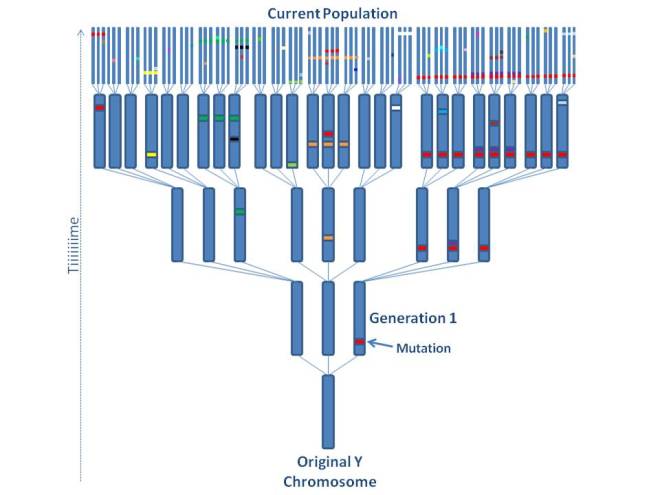
Even in a simple scenario, a reasonable mutation rate can give rise to a complex population. By examining the current population, the original genotype can be logically determined
If we apply this same logic to all humans alive today, we can similarly reach a single point of origin. This point of origin has been named Y-chromosomal Adam.
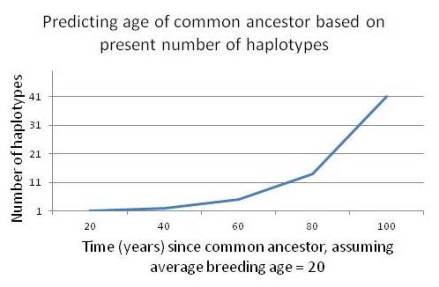
If you have a good idea of the number of different mutation patterns (haplotypes) out there and how often mutations happen, you can make an estimate of how long ago their common ancestor lived
This name has led to some confusion, as it implies that a single man has magically appeared fathered everyone on earth. The confusion comes from thinking of Y-chromosomal Adam as a single person, when in fact Y chromosomal Adam is actually just a Y Chromosome. Imagine that the sperm that goes on to become your grandfather has a novel mutation in its Y chromosome. This mutation is passed on to your father and uncles and then you, your brothers and your cousins. A cataclysmic event then happens that wipes all men excluding you and one cousin from the face of the earth, and the two of you have the egregious task of repopulating with all the remaining ladies. You both carry the same Y chromosome, and you pass it on to all your descendants and over time it mutates and diversifies further. The Y chromosomal Adam here is your grandfather’s Y chromosome. Thus, it is a single genotype that found the population not just one individual. Theoretically if the mutation rate on the Y chromosome was low enough, Y chromosomal Adam wouldn’t even have to be human – it could have been the first creature to evolve a Y chromosome!
There have been several estimates of how long ago Y chromosomal Adam lived. As more Y chromosomes are sequenced and new patterns are identified, and different analytical techniques are used to estimate their age, new theories spring up. The most recent calculations suggest that Y-Adam lived around 250,000 years ago. The study that made this calculation also reported that the data showed there was a ‘bottleneck’ in Y-chromosome diversity in non-African lineages which was consistent with when we believe humans left Africa 50,000 years ago, adding to this estimate’s credibility. They also reported that another bottleneck appeared to have happened around 10,000 years ago, which they believed to be due to social changes (away from polygamy) that increased the number of different males fathering children at this time (1).
Mitochondrial Eve
The partner of Y-chromosomal Adam in paleogenetics is ‘Mitochondrial Eve’. Mitochondria are cell organelles that were once organisms in their own right, until eukaryotic (animal) cells engulfed them in order to utilise the energy they produce. Mitochondria have retained their own genetic code from the time before their enslavement: some 16,569 bases of DNA containing 35 genes. Mitochondria exist outside the cell nucleus, so during conception when the nucleus of a sperm enters an egg cell, the only mitochondria that are passed to the next generation belong to the mother. While she passes them on to both male and female children, it is again only the females who will pass those same genes on to their descendants. Thus, just like the Y chromosome, mitochondrial DNA can be traced back, by the small changes that accumulate over time, to an origin point for all humans alive today. Current estimates suggest Mitochondrial Eve existed 99-200,000 years ago. It may seem odd that M-Eve and Y-Adam could have lived in different millenia. As are DNA sequences and not people, this could easily come about if the women that went on to produce modern humans were more closely related to one another than the men they bred with, or vice-versa – like in the picture below:
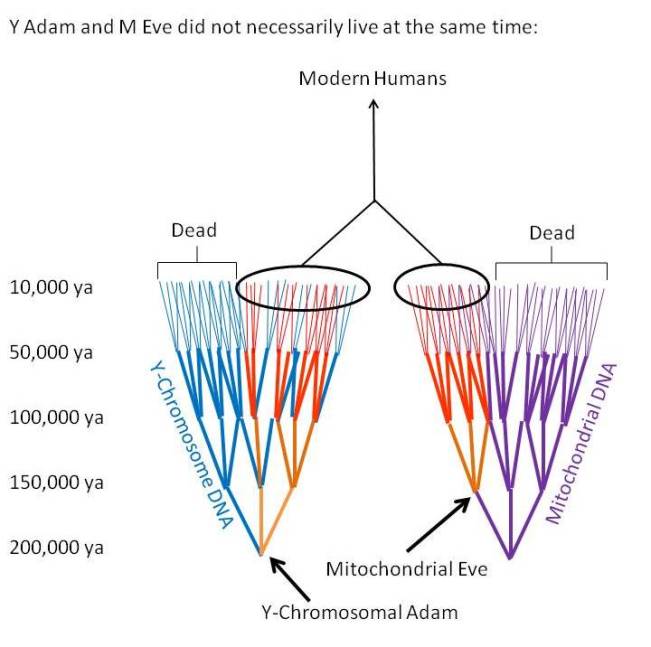
Mitochondrial Eve and Y-Adam did not necessarily co-exist. If the population that went on to form modern humans was made up of a more diverse group of men than women, then Y chromosomal Adam would be significantly further back in their evolutionary tree than Eve.
What do we know about these common ancestors?
Even if we could work out the exact sequence of the original Y chromosome and mitochondria, that itself wouldn’t tell us a lot about what the individuals who carried them were like. Asides a number of diseases where mitochondria don’t work properly, the genetic variants within their genome don’t really manifest as observable differences between people. The Y chromosome is also quite uninformative: its primary function is sex determination, and the majority of genes that convey interesting characteristics like eye and hair colour are carried on the autosomal and X chromosomes. We do know some things about what humans were like at the times we have dated both ancestors to, however, so we can make assumptions about them based on that. Both YCA and ME were around before humans left Africa. Human remains have been found at three sites in East Africa from around the time that we estimate Mitochondrial Eve inhabited this region. Examination of these remains, including three skulls, showed that these people were morphologically very similar to modern humans, although their brow ridges were more pronounced. Hunting tools were among the remains, and the skulls themselves showed scraping marks that indicated some sort of post-mortem manipulation. This is believed to be evidence that mortuary rituals were already being practised by people at this time (3).
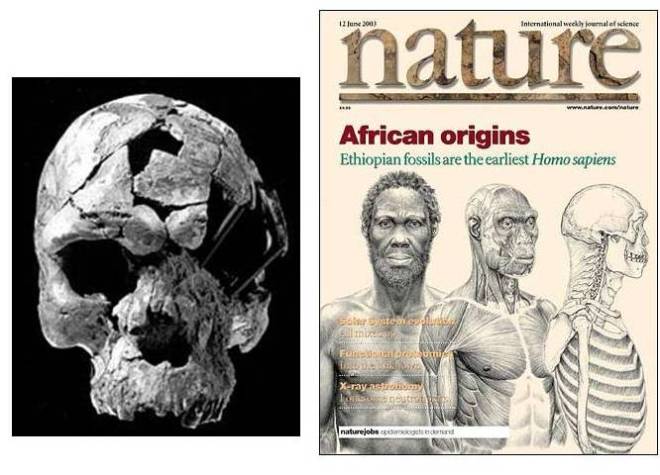
Skull from the Herto site in Ethiopia and illustration accompanying the findings reported in Nature (Images from BBC News page)
Our estimates of the age and nature of Y-Adam and M-Eve are still evolving. As we discover more new haplotypes not included in previous studies, we have to push back our estimates of how long ago modern humans diverged. Some populations have been poorly studied (or even never examined at all, such as the Sentinelese people) and it is likely that we will have to revise our guesses more times in the future before we hit on correct ages for our common ancestors. At the same time, as humans move forward in time some haplotypes may die off, meaning that a more recent copy of the Y chromosome or mitochondrial genome is a universal ancestor for the remaining population.
If humanity survives long enough, perhaps someone alive today is carrying DNA that will be the common ancestor for humans in the future….
References
- Karmin et al. “A Recent Bottleneck of Y Chromosome Diversity Coincides with a Global Change In Culture” 2015 http://www.ncbi.nlm.nih.gov/pmc/articles/PMC4381518/
- Soares et al. “Correcting for Purifying Selection: An Improved Mitochondrial Molecular Clock” (2009) http://www.cell.com/ajhg/fulltext/S0002-9297(09)00163-3
- http://news.bbc.co.uk/1/hi/sci/tech/2978800.stm
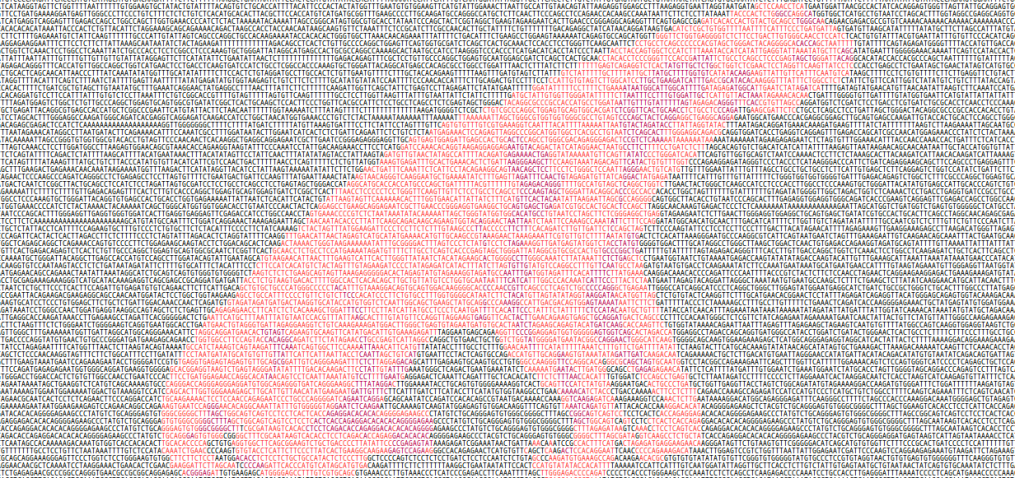
I work with mitochondria so naturally I was drawn to this post – an easy read that taught me something 🙂 Cheers!
Thank you so much for reading! It’s reassuring to know I must have at least a bit of the science correct in that case!